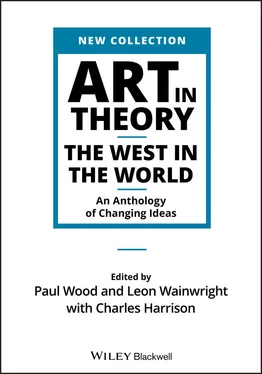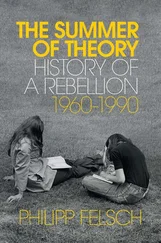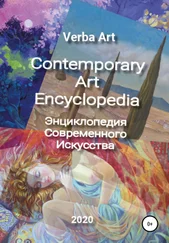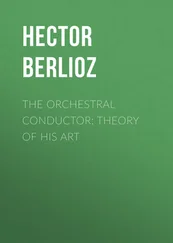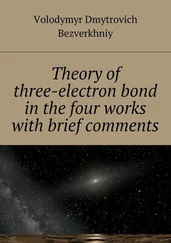Quite enough of the advantages we do gain over our enemies are mainly borrowed ones not truly our own. To have stronger arms and legs is the property of a porter not of Valour; agility is a dead and physical quality, for it is chance which causes your opponent to stumble and which makes the sun dazzle him; to be good at fencing is a matter of skill and knowledge which may light on a coward or a worthless individual. A man’s worth and reputation lie in the mind and in the will: his true honour is found there. Bravery does not consist in firm arms and legs but in firm minds and souls: it is not a matter of what our horse or our weapons are worth but of what we are.
IC5 Christopher Marlowe (1564–93) from Tamburlaine the Great
The empire of Timur, or Tamerlane, or in Marlowe’s spelling Tamburlaine, was the last great Eurasian land‐empire before the emergence of the western European sea‐based empires in the early modern period. The Oxford historian John Darwin’s account of the ‘Global History’ of those latter empires is titled, tellingly, After Tamerlane . Western Europeans of the Renaissance did not, on the whole, look down on or patronize the ‘Oriental’ rulers of such empires, Islamic, Chinese or other (cf. IA3 and 5). The overriding emotion tends to shift between respect and fear. In the later parts of Marlowe’s play, Tamburlaine is revealed as a model of the ‘Oriental despot’, but in its opening pages he is characterized as the very definition of a Renaissance prince. The play depicts a conflict between the decadent Persian Empire and the nomadic and victorious ‘Scythian’ Tamburlaine. In the short extract presented here, a group of disaffected Persian lords enquire of one of their number, who has encountered him, what Tamburlaine is actually like. The extract is from Act 2, Scene 1 of Tamburlaine the Great, Part One of c .1590, in Christopher Marlowe: Complete Plays and Poems , edited by E. D. Pendry, London: J. M. Dent, Everyman, 1976, p. 18.
COSROE.
Thus far are we towards Theridamas,
And valiant Tamburlaine, the man of fame,
The man that in the forehead of his fortune
Bears figures of renown and miracle.
But tell me, that hast seen him, Menaphon,
What stature wields he, and what personage?
MENAPHON.
Of stature tall, and straightly fashioned
Like his desire, lift upwards and divine;
So large of limbs, his joints so strongly knit,
Such breadth of shoulders as might mainly bear10
Old Atlas’ burden; ’twixt his manly pitch
A pearl more worth than all the world is plac’d,
Wherein by curious sovereignty of art
Are fix’d his piercing instruments of sight,
Whose fiery circles bear encompassed
A heaven of heavenly bodies in their spheres,
That guides his steps and actions to the throne
Where honour sits invested royally;
Pale of complexion, wrought in him with passion,
Thirsting with sovereignty, with love of arms;20
His lofty brows in folds do figure death,
And in their smoothness amity and life;
About them hangs a knot of amber hair,
Wrapped in curls, as fierce Achilles’ was,
On which the breath of heaven delights to play,
Making it dance with wanton majesty.
His arms and fingers long and sinewy,
Betokening valour and excess of strength;
In every part proportioned like the man
Should make the world subdu’d to Tamburlaine.30
COSROE.
Well hast thou portray’d in thy terms of life
The face and personage of a wondrous man.
IC6 Francis Bacon (1561–1626) ‘Of Plantations’
After attending Cambridge, Bacon became a lawyer and subsequently attained some of the highest offices in England at the moment of its consolidation as a nation state and the inception of its imperial history. In addition to his duties to the state, Bacon conducted pioneering research into natural philosophy and the reform of learning in line with modern developments in science. Bacon’s Essays , published first in 1597 and expanded in 1612 and again in 1625, achieved a status comparable to those of Montaigne (cf. IC4). After initially being critical of plantations in Ireland, England’s first overseas colony, Bacon became interested in the colonization of America and, after the failure of the initial attempt at Roanoke (cf. IB8), became a subscriber to the refounded Virginia Company as well as the East India Company. It goes without saying that Bacon’s vision was remote from the reality of colonization. He recommends a patient exploitation of virgin lands, counsels against both the expulsion of indigenous peoples and against exporting malcontents and criminals to the colonies. He also recommends enlightened statesmanship in running the colony. On the possibility of encountering ‘savages’, he recommends a more humane policy than eventuated, and in the manner of one sincerely committed to the ‘civilizing mission’, recommends bringing representatives of the indigenous inhabitants to the home country ‘that they may see a better condition than their own’, and recommend its virtues on their return. Our extracts are from the Essays of Francis Bacon , edited by Ernest Rhys with an introduction by Oliphant Smeaton, London: J. M. Dent, Everyman, 1906, pp. 104–6.
Plantations are amongst ancient, primitive, and heroical works. When the world was young, it begat more children; but now it is old, it begets fewer: for I may justly account new plantations to be the children of former kingdoms. I like a plantation in a pure soil; that is, where people are not displanted to the end to plant in others. For else it is rather an extirpation than a plantation. Planting of countries is like planting of woods; for you must make account to leese almost twenty years’ profit, and expect your recompense in the end. For the principal thing that hath been the destruction of most plantations, hath been the base and hasty drawing of profit in the first years. It is true, speedy profit is not to be neglected, as far as may stand with the good of the plantation, but no further. It is a shameful and unblessed thing to take the scum of people, and wicked condemned men, to be the people with whom you plant: and not only so, but it spoileth the plantation; for they will ever live like rogues, and not fall to work, but be lazy, and do mischief, and spend victuals, and be quickly weary, and then certify over to their country to the discredit of the plantation. The people wherewith you plant ought to be gardeners, ploughmen, labourers, smiths, carpenters, joiners, fishermen, fowlers, with some few apothecaries, surgeons, cooks, and bakers. […]
For government, let it be in the hands of one, assisted with some counsel; and let them have commission to exercise martial laws, with some limitation. And above all, let men make that profit of being in the wilderness, as they have God always, and his service, before their eyes. Let not the government of the plantation depend upon too many counsellors and undertakers in the country that planteth, but upon a temperate number: and let those be rather noblemen and gentlemen, than merchants; for they look ever to the present gain. Let there be freedom from custom, till the plantation be of strength; and not only freedom from custom, but freedom to carry their commodities where they may make their best of them, except there be some special cause of caution. Cram not in people, by sending too fast company after company; but rather hearken how they waste, and send supplies proportionably; but so as the number may live well in the plantation, and not by surcharge be in penury … If you plant where savages are, do not only entertain them with trifles and gingles; but use them justly and graciously, with sufficient guard nevertheless: and do not win their favour by helping them to invade their enemies, but for their defence it is not amiss. And send oft of them over to the country that plants, that they may see a better condition than their own, and commend it when they return.
Читать дальше
